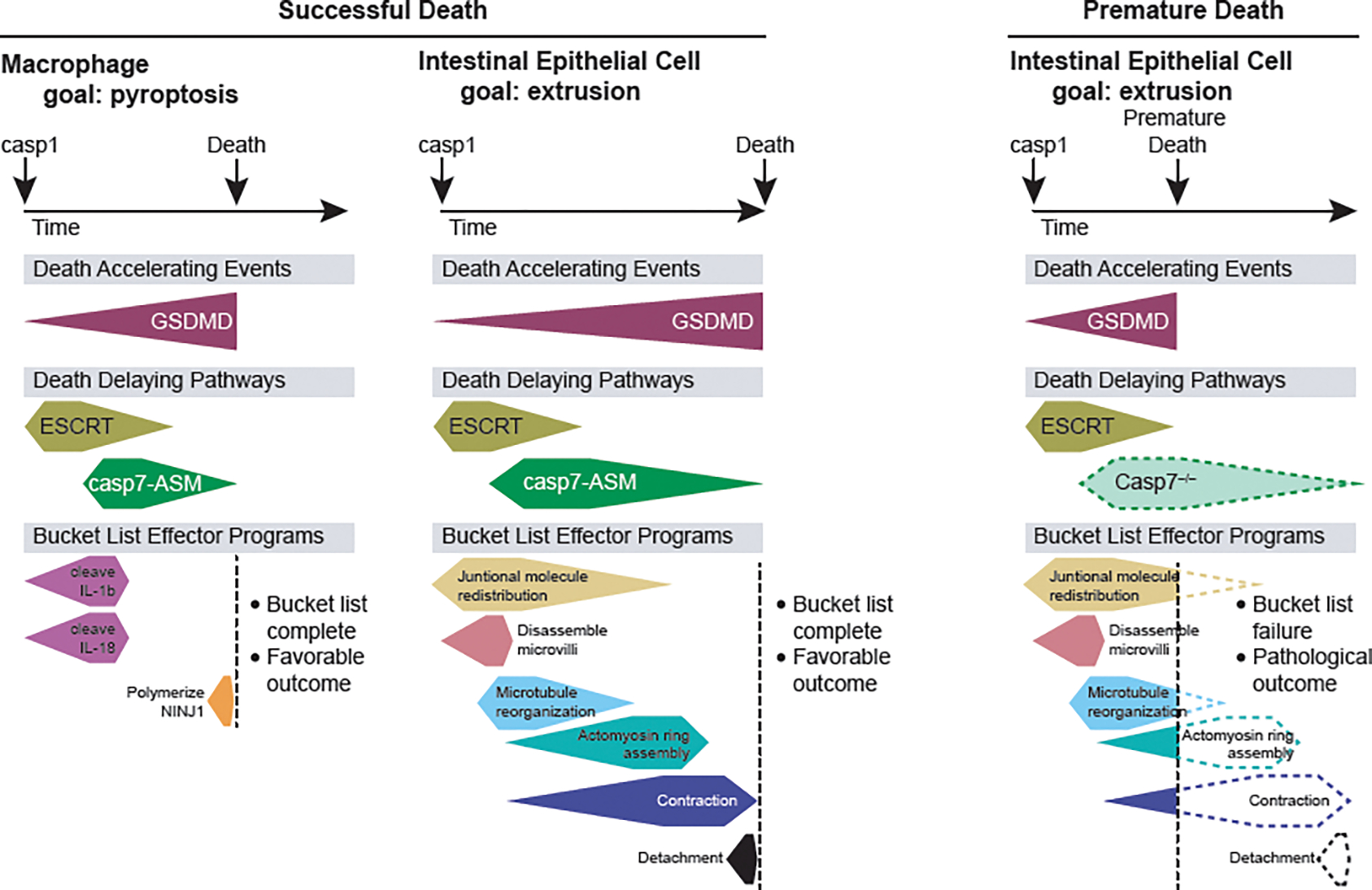Figure 1. The cellular bucket list.

After a death trigger, events occur in three categories: 1) death-accelerating pathways, 2) death-delaying pathways, and 3) bucket list effector programs. Different cell types and even different death triggers in the same cell type will have distinct survival durations of the cell and different bucket list tasks to complete. We depict specific examples of events in each category after caspase-1 activates in either a macrophage or an intestinal epithelial cell. In both, opening of the gasdermin D pore accelerates the progression towards death of the cell. In both, membrane repair pathways should delay the death of the cell, however because caspase-7 expression is higher in intestinal epithelial cells, the delay may be slightly longer. Simultaneously, the bucket list effector pathways are initiated. In macrophages, this includes cleaving IL-1β and IL-18 to their mature forms and activating NINJ1 to rupture membranes. In intestinal epithelial cells the bucket list includes a series of tasks that, once performed in order, accomplish the extrusion of the cell into the gut lumen. When premature death occurs (depicted at right), for example in a caspase-7-deficient cell, the bucket lists remain incomplete and pathologic outcomes can occur.
